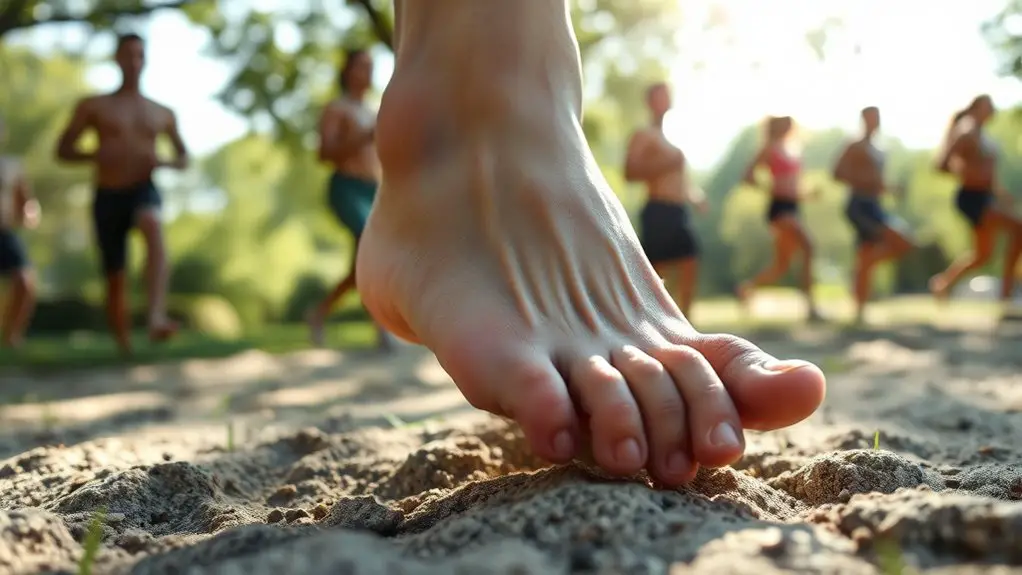Mobility work is essential for injury prevention because it helps maintain flexibility, balance, and strength, which are crucial for everyday movement. Without it, you risk developing issues like lower back pain or tight hips, leading to further complications. Incorporating mobility exercises into your routine can enhance your overall performance in various activities. Plus, dedicating just a few minutes each day can greatly improve your body's resilience. Discover more about effective mobility practices for a healthier lifestyle.
Understanding Mobility and Its Importance
While you might think of mobility as simply the ability to move freely, it plays an essential role in injury prevention and overall health. When you're mobile, you're not just enjoying the freedom to explore but also ensuring your body functions effectively. Good mobility helps maintain flexibility, balance, and strength, allowing you to engage in activities you love without fear of injury. It enhances your performance, whether you're running a marathon or dancing at a party. By prioritizing mobility work, you're investing in your body's resilience, reducing the risk of strains and sprains. So, embrace the freedom that comes with being mobile; it's your ticket to a vibrant, active lifestyle that keeps you doing what you love.
Common Injuries Caused by Lack of Mobility
When you neglect mobility, you open the door to various injuries that can hinder your daily activities. Tight muscles and restricted joints can lead to issues like lower back pain, which can make even simple tasks feel overwhelming. You might also experience shoulder impingement, limiting your ability to lift or reach comfortably. Additionally, tight hips can cause knee pain, impacting your freedom to move freely. Without mobility, you risk developing chronic conditions that could sideline you from the activities you love. By ignoring your body's signals, you might find yourself feeling less agile and more prone to injuries. Prioritizing mobility isn't just about preventing injuries; it's about reclaiming your freedom to live an active, fulfilling life.
Key Mobility Exercises for Everyone
Incorporating key mobility exercises into your routine can greatly enhance your overall movement and prevent injuries. Start with dynamic stretches like leg swings and arm circles to loosen up. Add hip openers, such as the butterfly stretch, to improve flexibility in your lower body. Don't forget about thoracic rotations; they'll help your upper body move freely. Incorporate ankle mobility drills, like the calf stretch, to support your foundation. Finally, try foam rolling on tight areas to release tension. These exercises not only promote better movement but also empower you to enjoy your activities without the fear of injury. Embrace these movements, and you'll feel more agile and ready for anything life throws your way.
How to Incorporate Mobility Work Into Your Routine
To seamlessly integrate mobility work into your daily routine, start by setting aside a few minutes each day dedicated to movement. Pick a time that feels right for you—whether it's morning, during lunch, or before bed. Consider incorporating dynamic stretches or yoga poses that resonate with your body. You don't need fancy equipment; just use your body weight and a little space. Pair mobility exercises with other activities, like warming up before a workout or cooling down afterward. You can even blend them into your favorite hobbies, like dancing or hiking. Remember, it's about finding what feels good and keeps you engaged. Consistency is key, so make it fun, and soon you'll feel the freedom that comes from increased mobility.
The Long-Term Benefits of Prioritizing Mobility
Prioritizing mobility can greatly enhance your overall well-being, as it not only prevents injuries but also improves your daily functional movements. By investing time in mobility work, you're setting yourself up for long-term health and freedom of movement. It allows you to engage fully in the activities you love, whether it's hiking, dancing, or simply playing with your kids. Improved mobility can enhance your athletic performance, making you feel more capable and confident. You'll find that everyday tasks become easier, reducing the risk of strain or overuse injuries. Plus, with a focus on mobility, you'll cultivate body awareness, empowering you to listen to your body's needs. Ultimately, prioritizing mobility is a key step toward living life on your own terms.
Frequently Asked Questions
Can Mobility Work Improve Athletic Performance?
Absolutely, mobility work can boost your athletic performance. It enhances flexibility, increases range of motion, and promotes better movement mechanics, allowing you to train harder, recover faster, and enjoy a more liberated, fluid experience in your sport.
How Often Should I Do Mobility Exercises?
You should aim to do mobility exercises at least three to five times a week. Consistency's key, so find a routine that fits your lifestyle, allowing you to feel free and move without restrictions.
Is Mobility Work Suitable for All Age Groups?
Absolutely, mobility work's suitable for all age groups! Whether you're a young athlete or a senior enjoying life, it helps maintain flexibility and strength, making everyday movements easier and more enjoyable for everyone.
Can I Do Mobility Exercises With Existing Injuries?
Yes, you can do mobility exercises with existing injuries, but it's essential to listen to your body. Adjust movements as needed, and consult a professional to guarantee you're promoting healing while gaining freedom in your movement.
What Equipment Is Needed for Mobility Work?
For mobility work, you don't need much—just a yoga mat, foam roller, resistance bands, and possibly a stability ball. These tools help you enhance flexibility and range, giving you the freedom to move better.




